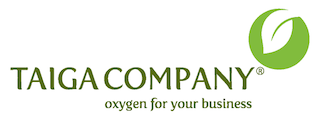The Pros And Cons Of Attending Trade Shows

In some sectors, trade shows and exhibitions are the lifeblood of the industry. They are where new products are launched and new customers acquired. The entire promotional calendars are built around key events.
So when it comes to your business, you might think about incorporating events and tradeshows into your annual business plan but how do you know if it’s the right thing for your business? After all, it takes a lot of time, effort, and resources to attend these events, you want to be sure that you’re doing it right to get the very best out of it.
We look at some pros and cons of exhibitions and trade shows.
Advantages
Building your brand
Live events are a fantastic way of building brand awareness for your companies and products. Your entire event strategy can be geared towards getting you in front of current and potential customers and creating a brand experience. Everything from your pre-event communications to your custom t shirts needs to be on point to enhance your brand further.
Attending and speaking at these events increases the profile and opens up other potential advertising opportunities.
Face-to-face interaction
In many industries today, marketing and sales are done digitally rather than face to face. Interaction with your customers one on one is rare. Use live events to build your relationships with potential customers and further cement relationships with your existing clients.
Build business relationships
The COVID pandemic has forced many companies to rethink how they interact with their industry networks. While modern technology is great for connecting us, there’s no substitute for in-person networking with people in your industry. It is a great opportunity to build connections with industry suppliers, speakers and influencers. These relationships could benefit your company for years to come.
Launch new products
Live product launches aren’t just for companies like Apple when they launch their latest iPhone. Debuting a new product or service at an event can make your launch special and that the people attending the event have the opportunity to ask questions and promote your product for you through word of mouth and social media.
Fill your sales pipeline
Unless you’re selling a physical product on your exhibition stand, then you can use events to fill your sales pipeline with hundreds of potential customers. Successful events are those where the planning and follow-up are executed well. Collecting data and following up with targeted messages that will eventually convert these prospects into profitable clients.
Matchmaking opportunities
Event organizers know that many companies want conversations with potentially important contacts. That’s why a number of B2B events now include matchmaking services for their exhibitors. Each event company runs this slightly differently but it usually involves exhibitors identifying who from the delegate list they’d like to talk to, and the event company making the introductions and setting up a short meeting during the event.
Disadvantages
Price
Attending an event isn’t cheap. Not only do you have the cost of booking the space, you need to produce the exhibition stands, promotional materials, and the cost of attending the event in terms of staff time and accommodation.
The competition will be there
Unless you’ve secured exclusivity (which is expensive), then your competitors will also be at the event. When this is the case it puts extra pressure on your to try and stand out from the crowd and attract and convert attendees to your stand. If you don’t put the planning and resources into your event, then you could potentially damage your brand in the eyes of your target market, doing untold damage.
There are no guarantees
When an event organizer approaches you about exhibiting at an event, it is likely that they will have a lot of great stats about attendees, marketing engagement rates and other similar numbers. But they cannot guarantee you anything. You could potentially spend a lot of money and come away with absolutely nothing. That is why selecting the right events is key alongside careful planning and follow-up.
How to give yourself the best chance of event success
As we’ve already seen, successful events take careful planning to really bring in ROI. While there is a considerable investment involved, it isn’t always the company that spends the most money that will have the most success. If you don’t record and follow up on your leads, then you’ve potentially wasted a lot of money.
Plan early
The earlier you plan, the more likely you are to have a robust promotional strategy and follow-up process in place, which is directly linked to your event success. Plan everything from your name badge to hotel rooms.
Advance planning will also enable you to maximize your pre-event promotion online and on social media.
Train your teams
Who will be representing you at the event? Will it be members of the sales team, or in smaller organizations, it could be the owners or managers. Whoever it is, they have a huge role to play as they will be the face of your brand.
Each member of the team needs to know your products and services inside out, as well as the tone of voice of your company and how it communicated with people. For the actual event, each member of the team must know what their role is and how they can record potential sales leads in the right way.
Prepare a detailed logistical plan for their reference so that they are always aware of what is happening and when and can deal with any situations that might arise.
Promote on your social channels
Most events have their own social media presence and it’s important that you try and piggyback on this potential promotional channel with communications of your own.
Social activity will allow you to connect with attendees in advance as well as give your company a sense of forward momentum to people who are looking at your social channels. Tag the right accounts and use the relevant hashtags to ensure your communications have the best chance of being seen by your network. Let people know when and where they can find you at the event.
Attract attendees with giveaways
One of the perks of events for attendees is all of the free merchandise they can pick up along the way. Your budget will need to work extra hard here. There are the basics such as pens, notebooks and other stationery, right the way through to having a coffee machine or mocktails at your stand.
Try and think a little outside of the box when attracting people to your stand.
Record all potential sales leads
Foot traffic to your stand is great, but you won’t have the time to talk to everybody. This is where you need to devise a way of collecting details. You could go very high tech and have bar code scanners for the attendee badges have iPads on your booth that people can put their details into or even a basic business card collection point. Design your booth and its content to enable you to collect these details easily.
Initiate your follow up plan immediately
Packing up your exhibition stand is not the end of your event. This is where the next part of the plan kicks in, the follow-up. You should already have post-event communications loaded up and ready to go. So whether your salespeople intend to reach out via phone or email, or you’re planning on dropping them into a funnel, you need to set this in motion. Delaying could cost you a lot of money in potential clients. Don’t let your competitors beat you to it.
Hold a debrief
Soon after the event, get the entire team together for a post-event debrief. Go through the entire process and discuss what worked, what didn’t and what you would do differently next time. Or, if the event did not go as well as you’d hoped, discuss if it is worth doing again in the future. Produce an initial report with your findings and recommendations as well as any details on the number of leads you acquired at the event.
Review ROI at regular intervals
Many sectors have sales cycles of varying lengths. For example, if it usually takes three months to convert a lead into a sale, then an event RI report six weeks later is going to show a much different story to one produced six months later. Don’t be tempted to forget about it until the decision needs to be made on re-booking the event.
Keep sustainability in mind
Trade shows can generate a great deal of waste. A helpful reminder is to employ the sustainable concept of the three R’s: reduce, reuse, recycle and reduce the space of your exhibit, reuse the exhibit, and recycle when it has reached its end of life. Be mindful of energy use in the exhibit and turn off equipment immediately after the show. Green your travel using eco-friendly hotels. Remember to turn off AC/ heater, lights, and computers when leaving home as well as in your hotel room. Utilizing eco-awareness in your trade show events is an important element in making your exhibit more memorable.
Final Thoughts
Attending events as a business is a decision that needs to be taken carefully. Achieving good ROI on an event is difficult but you can increase your chances of success by choosing your events carefully, being creative with your resources and allowing yourself ample lead time and follow up. Only by ticking all of these boxes will you be able to accurately gauge if it is worth pursuing events as a part of your overall sales and marketing strategy for your business.


